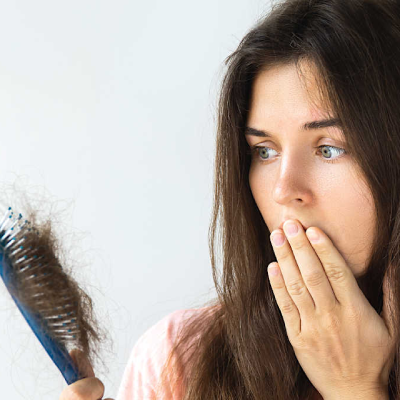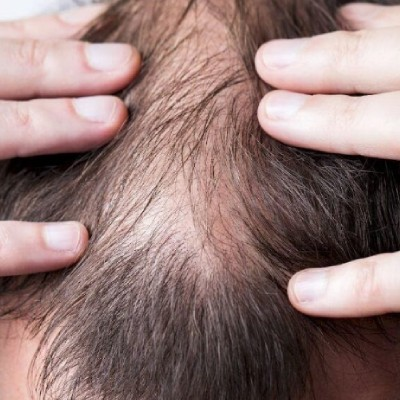Does PRP Treatment for Hair Loss Reverse Baldness without Surgery

10 March 2022

Hair Experts @ AHS

Having one's hair fall out may harm their self-esteem and capacity to interact with others. According to one study, about 29% of women who suffer from hair loss report experiencing depressive symptoms
Millions of people suffer from androgenetic alopecia, often known as male or female pattern baldness. If you're one of these people, you've had a similar experience.
Having one's hair fall out may harm their self-esteem and capacity to interact with others. According to one study, about 29% of women who suffer from hair loss report experiencing depressive symptoms.
According to a recent study, a new natural strategy may give more individuals hope for hair regeneration without surgery, medicines, or topical ointments. Hair loss may be reversed, and new hair growth can be stimulated using platelet-rich plasma (PRP) injections, a novel procedure that uses a cell type that helps mend wounds throughout the body to use your blood platelets. But always keep the caveat in mind - this solution may or may not render results for all types of hair loss stages. Detailed understanding hence best to be taken note of through a qualified hair loss expert.
What Exactly Is The PRP?
PRP treatment is a three-step medical technique in which a person's blood is taken, processed, and then injected into the patient's scalp to combat hair loss.
PRP for hair regeneration is an exciting new treatment option for those looking to return to their former selves in appearance and self-confidence. Doctors think that PRP injections encourage natural hair growth and assist in keeping it by accelerating the blood flow to the hair follicle and increasing the thickness of the hair shaft. With the help of additional medications or therapies for hair loss, this method may be employed.
How Does PRP Work?
Even though hair loss is often associated with ageing and genetic factors, adulthood may be a time of increasing hair loss. Losing your hair is known as balding because the hair follicles, which are tiny sacs that hold individual strands to the scalp, shrink, causing the hair to fall out.
Platelet-rich plasma (PRP) has become more popular when treating muscle and tendon injuries in athletes. It has been shown that activating platelets present in the blood of patients suffering from hair loss and employing platelets as growth factors may increase blood flow to the hair follicles and increase the thickness of their hair shafts, respectively.
We'll go through what to expect before you have PRP treatment for hair loss with you in advance. It is possible to increase the health and thickness of one's hair, as shown by several peer-reviewed studies in this field. Professionals will also discuss lifestyle alterations that may impact hair loss, such as quitting smoking and eating an Iron & vitamin D-rich diet, two minerals that have been shown in particular studies to promote hair growth.
Platelet-rich plasma (PRP) has been utilised to aid the healing of muscle and tendon injuries by physicians practising sports medicine. Injecting platelets from a patient's blood and activating growth factors have enhanced their hair follicles' blood supply.
Professionals will draw a tiny sample of blood from you and spin it in a centrifuge to isolate the platelets from the rest of your blood cells to diagnose your issue. After that, it will be removed and injected into the parts of your head experiencing baldness. The whole treatment is completed in less than 30 minutes. If the patient has any pain, they will be able to return to work the next day without any trouble.
Patients will need to return once a month for the first three months, then once every three to six months for the remainder of their lives to get another injection of medication.
There are no adverse side effects to worry about when you use your blood. There are certain levels and possibilities of concerns if the session is done by a novice or a not-so-experienced team of medical practitioners. These range within the range of haemorrhage, hematoma, infection, and nerve injury. Though seldom these complications do exist. Having PRP done is not recommended if you use anticoagulants, have an active scalp infection, have chronic liver illness, or have a low platelet count.
As with every breakthrough therapy, long-term research is now being conducted to understand better the potential of platelet-rich plasma for new and sustained hair regeneration, which is no exception (PRP). In recent years, many patients have begun to combine PRP injections with more standard hair loss treatments, such as medication.
A growing amount of scientific data shows that people suffering from hair loss may benefit from platelet-rich plasma (PRP) therapy. Patients were observed for up to six months after their PRP therapy in the majority of the studies.
Procedure
One typical strategy for PRP injections for hair loss includes the steps listed below:
- Arm veins are punctured by a medical professional to obtain blood.
- They use a centrifuge to separate the components of the blood sample.
- In the centrifuge, blood components are separated.
- A medical professional uses a syringe to collect platelets from the bloodstream.
- A doctor injects platelets into the scalp in particular areas using a needle.
- Many sessions will probably be necessary to finish the treatment in around an hour. After receiving PRP therapy, many patients can return to their daily routines with no limitations.
Several dietary changes and daily routine adjustments may be beneficial to encourage hair development or prevent hair loss.
Can PRP Treatment Reverse Hair Loss?

Platelet-rich plasma (PRP) is swiftly becoming a popular and successful option when treating hair loss. Physicians started employing PRP about a decade ago to expedite wound healing and increase cell proliferation at the location of the injury.
The success prompted more investigation, which ultimately led to researchers investigating the usefulness of platelet-rich plasma (PRP) in the treatment of hair loss. According to the Journal of Cutaneous and Aesthetic Surgery research, there was a "significant decrease in hair loss between the first and fourth injection" after the treatment.
"PRP therapy works as an elixir for hair growth because it has an action on almost all the essential components required for survival of hair follicles, according to a stem cell practitioners article published last year that studied PRP research and interviewed 117 people for their first-hand accounts.
The research evaluated by the team contained work that demonstrated regions where PRP treatment may help treat hair loss and encourage hair growth, among other things.
- PRP hair treatments may help persons with thinning hair slow the pace at which their locks are falling out.
- When thin hair is treated, it may regenerate as thicker hair from the same follicle.
- When the general health of the scalp is restored, the outcomes of hair treatments are enhanced as well.
- PRP treatments may stimulate dormant follicles that have been latent for some time.
- The treatments can eliminate or considerably decrease the need for regular medications for hair loss.
How Long Will It Last?
Platelet-rich plasma (PRP) is not a treatment option for disorders that cause hair loss, such as alopecia. Because of this, a person would need a large number of PRP treatments over time to sustain their hair growth outcomes. Furthermore, medications often used to treat androgenetic alopecia, such as topical minoxidil (Regaine) and oral finasteride, have been shown to have significant side effects (Propecia).
Various variables influence how often a patient gets PRP injections, including the patient's overall health and outcomes of their initial therapy. Your doctor may recommend you have maintenance injections every 3–6 months after your hair loss has been brought under control.
The Average Cost of PRP Hair Loss Therapy in Delhi
Depending on the provider, a single PRP treatment in Delhi may cost anywhere from INR 8000 to INR 12000. For hair loss treatment, the PRP hair treatment cost depends on the following factors:
- Prior training and expertise of a dermatologist or the track record of a clinic
- The quality of the equipment used in the process
- The number of sessions required
- The treatment's location, as well as your general health
- Safeguarding one's assets from harm
Conclusion
Researchers have demonstrated Platelet-rich plasma (PRP) to stimulate the production of new hair. There is a need for more studies to determine whether or not PRP is effective because of the limitations of these studies, including the small number of participants and the wide variation of techniques and protocols employed by different practitioners.
Additionally, to be successful, clinicians and researchers must identify which patients are most likely to react to PRP therapy and develop standardised treatment protocols.
A consultation with a hair doctor or a hair expert is recommended for those suffering from moderate to severe hair loss to determine if the PRP therapy is suitable for them.
Stay Updated
Subscribe to our email newsletter for helpful tips and valuable resourses
Be an influencer
Join forces with Advanced Hair Studio! Explore exciting collaboration opportunities tailored for influencers. Let's redefine haircare together.
Connect now












